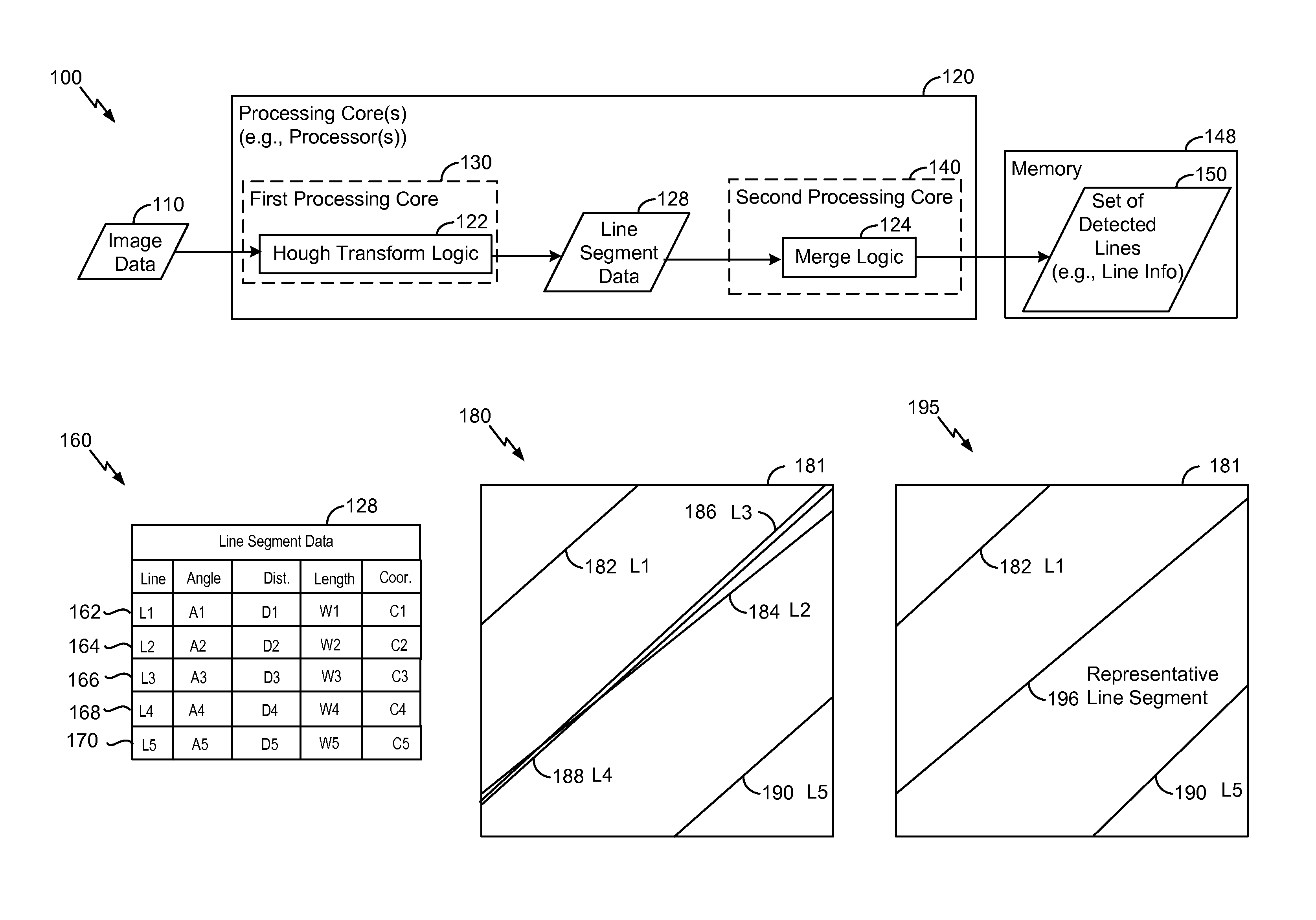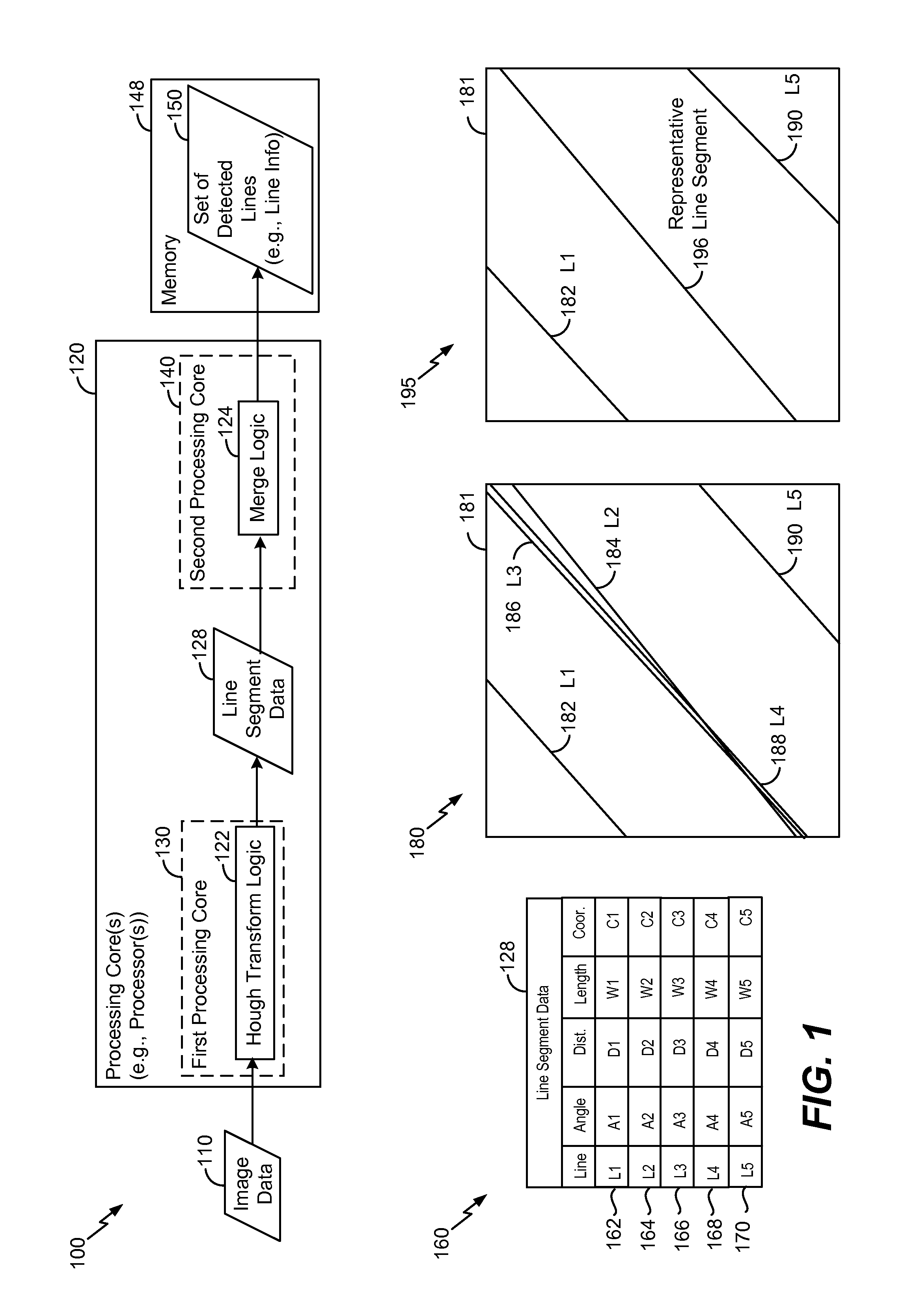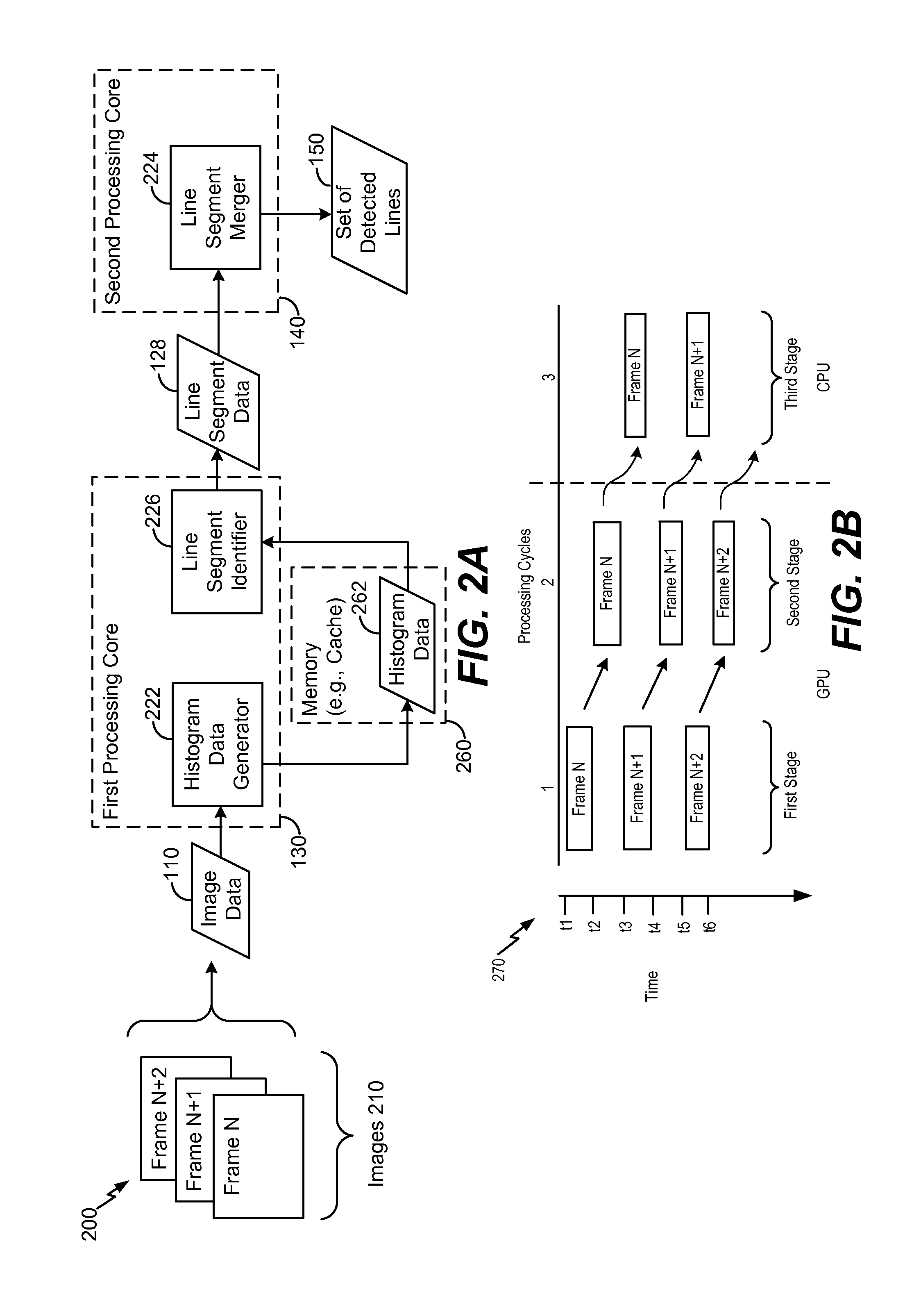Systems and methods for processing image data associated with line detection
a line detection and image data technology, applied in image analysis, processor architecture/configuration, instruments, etc., can solve the problemsaffecting the accuracy of image data processing, and consuming a large amount of memory space for the image analysis. , to achieve the effect of reducing the amount of processing time and power consumption
- Summary
- Abstract
- Description
- Claims
- Application Information
AI Technical Summary
Benefits of technology
Problems solved by technology
Method used
Image
Examples
Embodiment Construction
[0022]Particular embodiments of the present disclosure are described below with reference to the drawings. In the description, common features are designated by common reference numbers throughout the drawings.
[0023]Referring to FIG. 1, an illustrative embodiment of a system 100 operable to process image data to detect a line associated with an image is shown. The system 100 includes one or more processing cores 120 (e.g., one or more processors) and a memory 148. The system 100 may be included and / or embedded in a device, such as an electronic device. In a particular embodiment, the electronic device may be a mobile device that includes an image sensor, such as a camera, configured to capture images. For example, the electronic device may capture an image and may generate corresponding image data 110.
[0024]The processing core(s) 120 may include one or more processing cores, such as a first processing core 130 and a second processing core 140. Each processing core may include or may...
PUM
 Login to View More
Login to View More Abstract
Description
Claims
Application Information
 Login to View More
Login to View More - R&D
- Intellectual Property
- Life Sciences
- Materials
- Tech Scout
- Unparalleled Data Quality
- Higher Quality Content
- 60% Fewer Hallucinations
Browse by: Latest US Patents, China's latest patents, Technical Efficacy Thesaurus, Application Domain, Technology Topic, Popular Technical Reports.
© 2025 PatSnap. All rights reserved.Legal|Privacy policy|Modern Slavery Act Transparency Statement|Sitemap|About US| Contact US: help@patsnap.com



